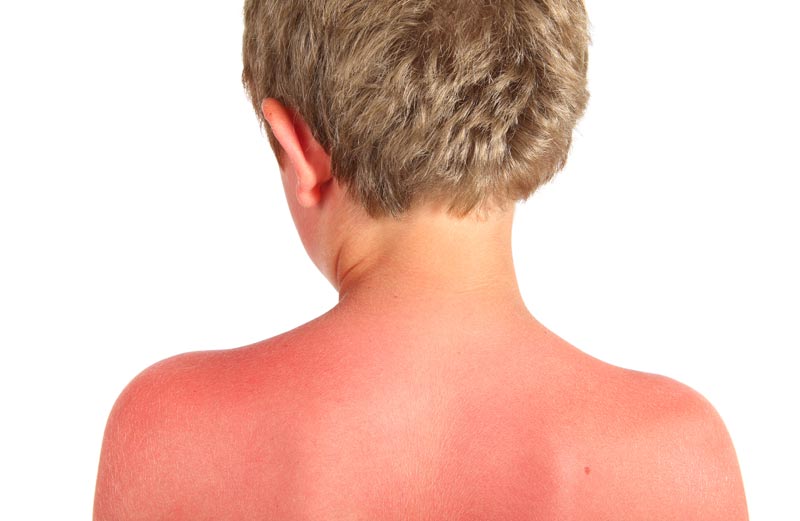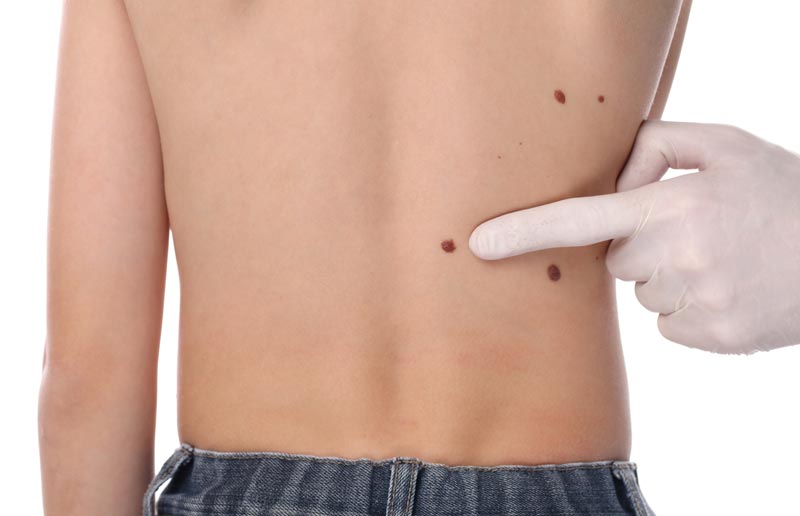Posted on 03/19/2024

Even when it's not extremely bright or hot outside, our kids can be exposed to harmful UVA and UVB rays, which can cause skin cancer. The deadliest kind of skin cancer, melanoma, can quickly spread from the skin to the body's other organs. Once considered something that only affected older adults, this deadly disease is on the rise even among teens and young adults in their 20s. The good news is that melanoma is preventable and often treatable, when it's caught early enough.

Recognizing Sun Damage
A blistering sunburn is an obvious form of sun damage — but if you think sun damage only occurs when there's uncomfortable sunburn, you're wrong. And the more occasional the exposure, the greater the chance of damage. Those who use tanning beds, where they are exposed to especially concentrated exposure to UV rays, can also increase their risk. Getting a "base tan" before a tropical vacation may decrease your risk of a sunburn, but it does nothing to reduce your exposure to the kind of damage that causes melanoma. Any discoloration of the skin — whether we perceive it to be attractive or not — actually puts a person at risk.

Knowing Risk Factors
Some children are especially at risk, including the following:
• Those with light skin who burn easily
• Those who have more than 25 moles
• Those with a family history of melanoma
• Those who have experienced frequent or severe sunburns
• Those who have previously had melanoma
For those who have the above risk factors, be sure to be extra vigilant about sun protection. However, just because your child has no moles, a dark skin tone, never gets a sun burn, and has no family history of melanoma doesn't mean he or she can't get skin cancer; you still need to take precautions.

Checking Moles
One way to detect melanoma early is to regularly look at your child's skin, noting any moles. These routine skin checks will allow you to easily spot any changes that may indicate cancer. For girls, cancerous moles typically appear on the lower legs; for boys, they usually occur on the head, neck, or trunk.
When checking moles, you're checking for change as well as for the following characteristics, which can be easily remembered by the first six letters of the alphabet: A-B-C-D-E-F:
A: Asymmetry (Take note if left and right sides look different.)
B: Border (Blurry or undefined edges may indicate a problem.)
C: Color (Complete color change or a lighter or darker shade may mean trouble.)
D: Diameter (If the mole is larger than a standard pencil-top eraser, it may be at risk.)
E: Elevation (Bumpy or raised surfaces are particularly problematic.)
F: Festering (If a mole begins to itch or bleed, be sure to have it checked.)
If you notice any new moles or any of those kinds of changes in an existing mole, be sure to inform your child's primary care physician.

The Bedroom Source
Located near the Roosevelt Field Mall on Long Island, The Bedroom Source is your source for the best collection of children's and teen bedroom furniture. From flexibly configurable Maxtrix furniture to fashionable, durable New England-made collections, The Bedroom Source offers high end furniture and professional design assistance to create the bedroom of your child's dreams.
Contact the friendly staff at The Bedroom Source by calling (516) 248-0600 or by submitting our online contact form. We're a local family owned mom & pop store. When you shop with us, you're dealing directly with the owners. We professionally assemble everything we sell. We deliver to Nassau, Suffolk, the 5 Boroughs, Southern Westchester, Southwestern Connecticut & Northern New Jersey.
Source cited: http://kidshealth.org/en/parents/melanoma.html
